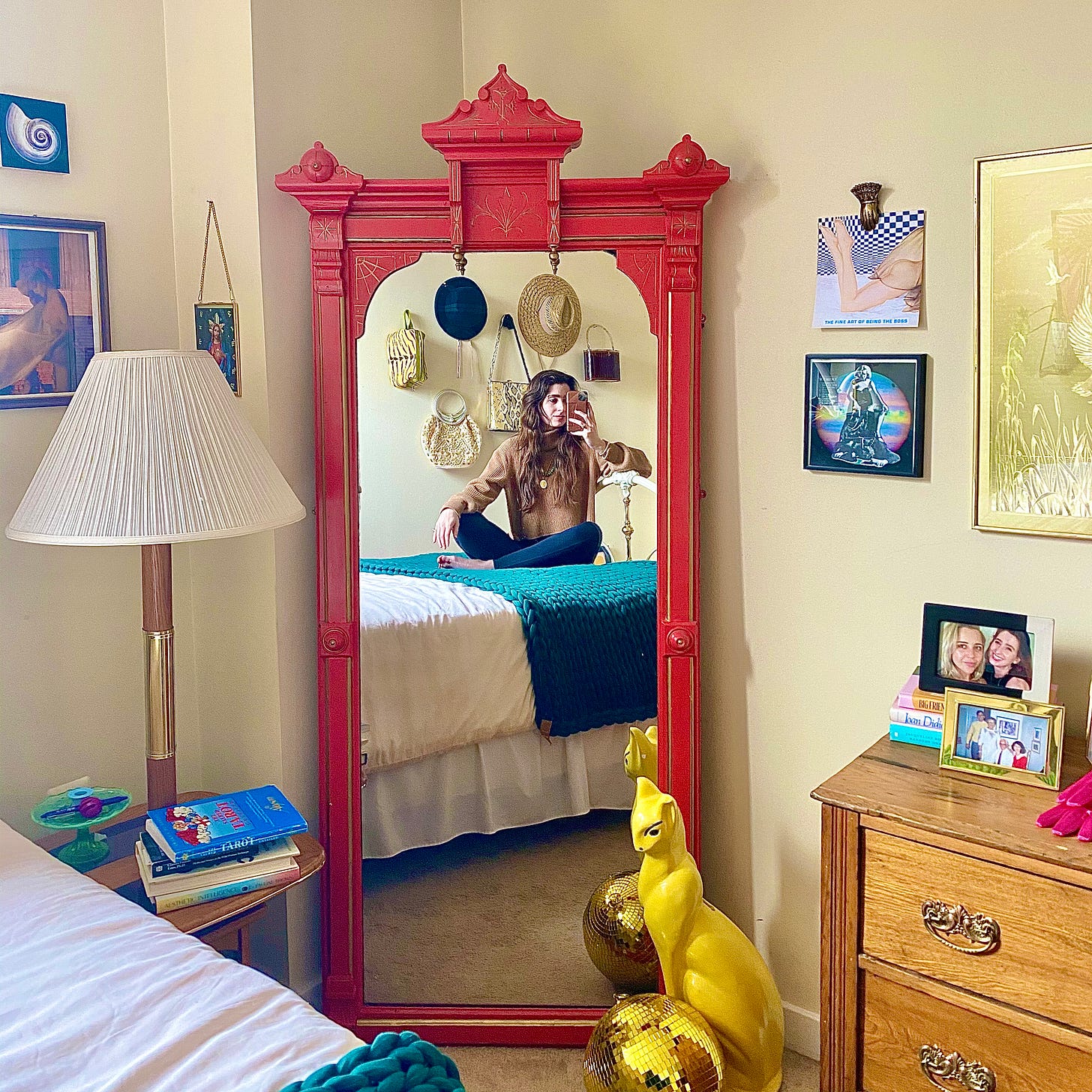Design History: Victorian Renaissance Revival
And the story of my massive, fancy, haunted, red mirror.
This mirror is the first thing I bought when I moved to D.C. I found it on the LetGo app for $80. The seller wouldn’t deliver it until I saw it in person—apparently a past sale had fallen through when a potential buyer saw the mirror’s imperfections in person—and that’s how I ended up in Springfield, Virginia, the very end of the Metro blue line, walking two miles to the storage unit of a woman named Lovie.
Lovie’s sons delivered the mirror to me the next week for an additional $20. I glued its wobbly peaks on straight with wood glue, cleaned the glass, and leaned it in the corner of my bedroom. I called it “pagoda mirror” in my head, because the top reminded me of the Asian architecture style.
I was off by an entire continent.
The style, I learned from the knowledgeable folks at D.C. secondhand furniture destination GoodWood, is actually called Victorian Renaissance Revival. The Victorians, whose period is marked by Queen Victoria’s reign in England from 1837-1901, loved a throwback moment. Rococo (think Marie Antoinette), Egyptian, and Greek were some favorite aesthetics of the time. But what has caught my eye again and again at estate sales and vintage stores is Renaissance revival furniture from the Victorian period.
According to Essentials of Period Style by Hal Tiné, my holy book, Renaissance (think Queen Elizabeth I, ~1300s-1600s) furniture was large, heavy, ornate, and designed to compliment the architecture of a space. Elements from Greek and Roman mythology were popular, and upholstery emerged as an art form thanks to the aristocracy’s interest in funding creative and decorative pursuits.
Fast forward a few hundred years into the Victorian period, where the proliferation of railroads and increasing accessibility of world travel led to a magnificent mishmash of international influence on the decorative arts. Hence my red, pagoda-esque mirror with the intricate, neoclassical column carvings of the Renaissance period inlaid with the favored gilded paint of the Victorian. The Victorians were a spooky bunch (just wait for the newsletter dedicated to mourning jewelry), which explains the spiderweb motif on the inner corners of the mirror.
Take a deeper dive into revival styles with this excellent article from The Met, which also has some spectacular photos from their collection of antique furniture.
Is there an aesthetic movement or time period for which you’d like me to dedicate a newsletter? Reply and let me know! Otherwise I’m going to jaunt about though history willy nilly.
Until next time,
Elizabeth
This newsletter is just one facet of Zhuzh, my platform dedicated to conscious consumption and making space for delight. I offer secondhand-and-vintage-based wardrobe and interior styling services, art curation, and super chill life coaching. Keep up with me on Instagram and learn more at www.zhuzhlife.com.




